












Last Gasps
Paranormal



The South’s science-based team!
Our trained investigators are here to believe you. Most importantly, we are here to solve the problem...no matter what it takes. Our services are always FREE.

© 2023 Last Gasps paranormal. Links | Terms and Conditions







Ouija Boards and the demon Zozo

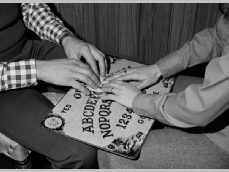
Disclaimer: This work has been completed as an educational tool for students of history, religious and paranormal studies. The author wishes to discourage any use of this work in conjunction with paranormal field investigations of demons.
Written by Kyle T. Cobb, Jr. As a research tool.
Nos tibi credere.
A Literary History
The Ouija Board and Zozo
By KyL. T. Cobb, Jr.
Thanks to the sensationalism of the modern pop-culture paranormal television shows, frequently the idea that there is a particular demon assigned to terrorize individuals using the talking boards has emerged. While the use of an Ouija board is never encouraged, the idea that a single demon spends its days waiting for an eight-year-old to possess because the child is using a board game is ridiculous.
The History
Attempts by men to communicate with spirits dates back to the earliest points in history. While the form of the communications varies greatly, a few divination tools featured elements common to a modern Ouija board.
The 1920 Encyclopedia of Occultism by Lewis Spence asserts that a letter and pointer device was used in the time of Pythagoras around 540 B.C. in Greece. This often cited reference fails to give any supporting evidence and no traces of such objects can be found mentioned in any Greek writing of that period. Sadly, this problematic work has been heavily used in many divining tool histories perpetuating an incorrect myth.
One of the earliest contemporary mentions of divination devices was recorded by historian Ammianus Marcellinus in his The Later Roman Empire series of books written between 354 and 378 A.D. In these works, Marcellinus relates the trial of Patricius and Hilarius. As part of their testimony, the men speak of using a tripod with a ring hanging from it on top of a dish with twenty-four letters. The ring would swing over the letter to spell the words from the gods.
As early as the Chinese Liu Song Dynasty (420-479 A.D.), there are mentions of spirit writing. As part of Taoist practice, a form of spirit writing called fuji (or Fu Chi) used was used to summon the Lady of the Privy ( 異 Yiyuan ). Early forms of the practice used a stylus suspended from a sieve or a winnowing tray. The lead priest and an assistant would suspend the stylus over a sand filled “tablet” and the spirit would guide the stylus in making short messages. Many of the messages used special characters unique to the fuji writing.
During the Tang Dynasty (618-907 A.D.), the practice was expanded and refined. The use of the tray (扶) was eliminated and in its place a stylus supported by a forked peach tree limb (扶) was used to automatically channel communications from the spirit world and from the dead. The tradition grew in popularity and spread southward during the Song Dynasty (960-1279 A.D.).
It is believed several Taoist canonical works included in the Daozang (道) were created entirely through fuji. The use of fuji was particularly embraced in Northern China as part of the Quanzhen School branch of Taoism that focused on the process of alchemy within the body. Essentially, the Quanzhen believed that internal focus on the body (excluding external potions and herbs) could cause the body to find “completeness and Truth.” Expressed another way, “action through inaction.”
The rise of the Qing dynasty in 1644, marked the beginning of the end for fuji in China. The Qing rulers neither understood nor believed in Taoism. Initially, Tao was tolerated as a necessary evil to placate the Han Chinese majority. By the reign of Emperor Qianlong beginning on 11 October 1735, strict controls over Taoist practices were imposed and the use of fuji was outlawed.
The popularity of the Spiritualist movement in America brought the idea of communicating with the dead to the forefront of American popular culture. The early American origin of spiritualism begins on 31 March 1848 when the Kate and Margaret Fox of Hydesville, New York announced that they had successfully contacted a spirit. The claims by the Fox sisters were quickly embraced by the Quakers in New York and continued to grow in popularity.
By the 1850s, the use of lettered boards with a “blinded” medium became common. The medium would hover their hands over the board and choose the letters divinely inspired. Of course with practice, touching fix letters on a board is less than magical.
The onset of the War of Northern Aggression saw the movement pause, but as the casualty count increased, more Americans wanted to speak with their deceased loved ones. As a result of the national grief, fraudsters like the Fox sisters preyed upon those desperate to contact spirits. A favorite scam for the con artist was the use of “automatic writing,” to reveal notes from the afterlife to the paying customers. A number of these mediums utilized a planchette, French for “little board”, that was a tiny triangle board with casters on two corners and a sharpened pencil on the other.
However, the novelty of using a planchette that often produced illegible writing quickly bored with the spending public. As a result, by 1871, enterprising spiritualist began experimenting with various forms of divination tools that pointed to prewritten letters. A popular version of the early devices featured a spinning dial with letters. (Quarterly Review, October, 1871)
By 1876, one spiritualist shared his family innovation in spirit communication by the introduction of a board with pre-printed letters as well as a “yes” or “no” response. The board was read with two participants hands using a polished rod floating on a bed of soap stone shavings to point to each letter. (American Spiritualist Magazine, December 18, 1876.)
The earliest known description of an immediate predecessor to the Ouija board appeared in the 28 March 1886 New York Tribune. The Tribune story introduced a new form of talking board. With pre-printed letters, a yes/no section as well as a “good-eve” and “good-night,” the 1886 talking board used a tiny wooden table with three-inch legs held by two people just above the board. As the table was moved back and forth over the board, the legs would touch letters spelling words.
By 1886, the W.S. Reed Toy Company of Leominster, Massachusetts began producing a version of the 1886 talking board marketed as “The Witch Board.” (Boston Globe June 5, 1886) A copy of the new “Witch Board” was sent to President Grover Cleveland in June 1886 as a wedding present.
On 28 May 1890, businessman Elijah Bond applied for a patent on the idea of selling a planchette with a printed alphabet board for the Kennard Novelty Company, owned by William H. A. Maupin and Charles W. Kennard. Some historians claim that the product was actually invented by E.C. Reiche who sold the product to Kennard in 1886. However, Kennard would proclaim in a series of letters to the Baltimore Sun in 1919 that he had invented the board and that Reiche had simply been hired as a fabricator. Nevertheless, the patent was accepted on 10 February 1891.
The first Kennard talking boards went on sale in 1890 for the staggering price of $1.50.
During a hostile takeover of the business in 1891, both Bond and Kennard were fired from Kennard Novelty. Production of the talking boards was assigned to a varnisher for the company named William Fuld, who was also the young protégé of the new owner Washington Bowie.
By 1892, Kennard Novelty had changed its name to the Ouija Novelty Company and moved into an expanded manufacturing facility. While Charles Kennard claimed that the name of the company came from an ancient Egyptian word meaning “good luck” that the board had given him, the more widely accepted origin of the name is a combination of the French and German words for “yes.”
Under Fuld, Ouija board production increased and he actively blocked the expansion of the other Ouija Novelty Company’s product lines.
In 1898, William Fuld left the Ouija Novelty and formed the Isaac Fuld & Brother company. Leasing the name Ouija from the Ouija Novelty Company, the brothers continued to manufacture the growingly popular talking boards along with billiard tables.
In 1898, the partnership collapsed. Both William Fuld and Isaac Fuld continued to make talking boards. William Fuld produced Ouija Boards while Isaac Fuld manufactured an identical board called the Oracle Board. The split also spawned a bitter lawsuit between the brothers that persisted until 1919.
To prevent other competitors from entering the market, William Fuld repeatedly sued any other manufacture that copied “his idea” of creating a talking a board.
As part of a secondary front in retaining dominance for “his” Ouija board, beginning in 1919, Fuld issued a second identical copy of his Ouija board as a cheaper alternative called the Mystifying Oracle.
To further support the popularity of the product, Fuld launched a line of Ouija based jewelry and Ouija Oil for rheumatism.
Throughout his life, Fuld asserted that he never believed the Ouija board had the ability to communicate with spirits. As a devote Presbyterian, he attributed the use of the board to a psychological phenomenon controlled by the hands.
By the 1920, the Ouija board had made enough of an impression to be the title and subject of one of Max Fleischer’s Koko the Clown short live action/animation films. The animation features the clown attempting to enter a haunted house but being scared by ghosts. The live action portions feature the artist, his assistant, and a janitor playing with a Ouija board. The cartoon clown escapes from the cartoon drawing board and then takes control of the planchette to cause mischief.
Following Fuld’s death in an accident on 24 February 1927, two of Fuld’s children, Catherine and William, ran the company until 1942. That year, control of the company was passed to Hubert Fuld, the youngest child.
In 1966, Parker Brothers purchased the William Fuld Manufacturing Company and with it the rights to produce their own Ouija board. In 1991, Hasbro purchased Parker Brothers.
The Science perspective
In 1852, scientist William Benjamin Carpenter, first proposed a linkage between automatic writing and a psychological reaction referred to as the Ideomotor phenomenon. In essence, the belief is that the physical responses of things like automatic writing and the movement of the planchette are made subconsciously by the device operator in response to stimuli.
Of course, in the case of mediums, the words “fraud” are often used to describe results.
Problems
World famous magician and paranormal debunker, Harry Houdini tackled the problem of Ouija boards in the 1920s. It was Houdini that first suggested that the use of a Ouija board could exacerbate existing psychiatric problems. Houdini also claimed to know five people sent to asylums related to Ouija board use.
Houdini was credited as saying on 20 May 1923: (Oakland Tribune, May 20 1923)
Mrs. Houdini once declared that I would go crazy if I didn't quit delving into the occult. That was when I was a medium. Hundreds of people become daft playing with the Ouija and allowing fake communications with spirits to unseat their minds and break down their reasoning power.
And on 26 November 1921, Houdini stated that he believed that, “the Ouija board is the first step to the insane asylum.” (Daily Tar Heel, November 26 1924)
Houdini’s statements led doctors to begin exploring the negative impacts of board use on the mental health of subjects. As a result, many medical professionals called for an end to the boards’ use.
On 13 March 1920, police in San Francisco were noted in the Sausalito News for arresting seven Italians that were driven insane by the use of a Ouija board. The Italians stated that fifteen-year-old Adeline Bottini installed a Ouija board in the home and forced the residents to hover over the for several twenty-four hour sessions. A number of kidnapped children were found in the house with shaved heads and suffering from malnutrition. Stating that the spirits had commanded them to burn over $700 in cash and most of their possessions a sacrifice, the nearly naked Italians were sent to Martinez Hospital for observation.
In 1925, Dr. Marcus Curry, the Medical Superintendent of the Greystone Park Psychiatric Center in Morristown, New Jersey was quoted by Houdini as issuing: (Times Signal, August 16 1925)
a warning against the Ouija board, in which he said that this object is especially serious because it is adopted mainly by persons of high-strung neurotic tendencies, who become victims of actual illusions of sight, hearing and touch at spiritualistic séances.
Contributions
In spite of the general skepticism concerning the use of Ouija boards, there have been many authors that have credited their writing to the use of Ouija boards. In 1917, Emily Grant Hutchings professed that Mark Twain had had dictated her book Jap Herron: A Novel Written from the Ouija Board. Certainly the late Mr. Clemmons was not amused. Patience Worth claimed that a spirit named Pearl Lenore Curran began dictating books to her after an Ouija session on 22 June 1913. Worth claimed that her books Telka, The Sorry Tale, Hope Trueblood, The Pot upon the Wheel, Samuel Wheaton, and An Elisebethan Mask, were all produced with assistance of the spirit. In 1970, Jane Roberts and Robert Butts began releasing a series of books that they claimed were from communications with a spirit named Seth that they had regularly communicated with since 1963.
In full disclosure, though I am sure you have guessed by now, this entire article was dictated to me by William Shakespeare.
Paranormal
From the very beginning of the American spiritualist movement, divination using letter direction has been embraced by the occult practitioners.
While well-known occultist Aleister Crowley used the board as part of his magical workings, his companion at the Abby of Thelema, Jane Wolfe, used the board extensively. Crowley frequently discussed Ouija board ideas with his student Charles Stansfield Jones. In fact, Crowley and Jones discussed production of their own version of the board in a letter from 21 February 1919.
One of the first movies to link the use of a talking board to haunted houses and paranormal was the 1940 horror film The Uninvited. In the film, a couple purchases a haunted house. Eventually to communicate with the ghosts haunting the house, a séance is performed using an improvised talking board made from scrabble and a wine glass.
While the sales of Ouija board continued throughout the twentieth century, the public awareness of the product as a paranormal tool faded following World War II.
While the general public lost interest in the Ouija board, there was a brief resurgence in using the board to speak with the dead thanks to the 1960 film Thirteen Ghosts. Using the board, the ghosts announce that they will H-U-R-T and K-I-L-L the family living in the house.
By the mid-1960s, the product was largely viewed simply as a children’s game. This ease in perceptions was partial responsible for the acquisition of the product by Parker Brothers.
The success of the 1971 Peter Blatty book, The Exorcist, changed the perception of Ouija boards. In the book, the young Regan MacNeil uses a Ouija board to communicate with the demon Pazuzu pretending to be the spirit of a man named Captain Howdy. While Regan uses the board, she can also hear the spirit’s voice. While the success of The Exorcist book lay the groundwork for the relationship between demons and the Ouija board, the massive success of the movie solidified the Ouija board as a demonic portal in the minds of millions of people for generations.
With the new Ouija board demonic paradigm established, the subsequent decades would find dozens of television shows and movies warning of the demonic dangers of using Ouija boards.
In spite of an overwhelming pop-culture relationship between Ouija boards and demons, Hasbro continues to sell the toy to children age eight and up.
Zozo
Over the past few decades a legend of a Ouija board demon calling itself Zozo has dominated Ouija board discussions. As mentioned earlier, the idea of a single demon dedicated solely to Ouija boards that crisscrosses the United States to terrorize toy owners is dubious.
The earliest known mention of a demon named Zozo is found in the Jacques Collin de Plancy’s 1816 book Dictionanaire Infernal. The entry tells the story of a French girl from Picardy, France that claims to be possessed by three demons: Mimi, Zozo and Grapoulet. What Zozo “historians” (that most likely never actually read the old French text) fail to mention is that the entire possession case was considered a fraud. Not only had the girl been previously arrested for pretending to be possessed but when priests tested her by reading Latin prayers mingled with Cicero, the girl reacted negatively to both. Here is a brief exert in both the original French and in English evidencing the fraud:
Fortunately, the entire Dictionanaire Infernal is available for free in old French on the Internet here. (http://gallica.bnf.fr/ark:/12148/bpt6k5754923d/f8.image)
One of the most concrete linkages to the name Zozo and the idea of magic and demons may be traced to the 1835 French play Zazezizozu that was an adaptation of a story from the Arabian Book of a Thousand Nights and a Night. The original tale which appears in Sir Richard Francis Burton’s Supplement Book III as Prince Ahmad and the Fairy Pero-Banu (Fairy Queen) was also retold as by the Greek writer Pio as Contres Populaires Grecs as the Golden box (Το χρυσό κουτάκι).
In the play Zazezizozu, three princes plot for their father’s throne and the hand of their sister, the princess. The princes are named Zizi, Zozo, and Zuzu (which translate to “childish”, “a fool”, but Zuzu does not translate). Each son enters a magical land (one of cards, one of dominoes, and one of dice), to compete for a prize and to win the princess. The victor brings roses from the lands of cards. In 1836, Edward “Fitzball” Ball used the French play as the basis for a comedic play he wrote called Zazezizozu or Cards, Dominoes, and Dice. The story quickly gained in popularity and toured in England and the United States.
During the 1880s, a popular opera was titled “Zozo the Magic Queen.” Noted for over 200 mechanical pieces, the story moves from a shipwreck to fairy land to a demon cavern. It ends with an enchanted island and Grand military ballet. When an American ship wrecks on the coast of Fairyland, the captain and the crew are washed ashore. Zozo, the queen of the land, and her entourage, discover the men, who are the first mortals they have seen. The captain falls in love with Zozo, and eventually, wins her heart. But part of the story also involves the capture of Fairyland by a group of evil men that also discover the land. Like many operas of the time, the event was partially comedy, partially burlesque, and ,partially, an elaborate ballet. At least one of the touring companies featured famous comedian George H. Adams, actress Bertie Crawford, and scenery by Henry E. Hoyt. The opera toured America from 1884 until at least 1895. Part of its duration was the result of a retool of both the script and scenery in 1893.
The next alleged mention of the name Zozo as a demon is cited in Alberto Malet’s book, L'Antiquité l'Orient la Grèce (The Ancient East of Greece). Zozo sources claim that in his 1916 version of the book, Malet asserts that Pazuzu is also known as Zozo. A review of the text from Malet’s 31 May 1902 version of the book does feature a photo of Pazuzu on page 62 of the book. However, Pazuzu is never named except as “Le Vent du Sud-Est.” The words “Zozo” is never used in the text.:
Since scholarship requires precession, it is important to note “Zozo historians” more often cite the 1916 version of the book published after Malet’s death. An examination of the version shows that while that are several additions to the work, the section on Assyria is fundamentally not changed. As stated with the first edition, neither Pazuzu or “Zozo” are ever mentioned by name in the book.
In the 1971 Peter Blatty book, The Exorcist, the Assyrian demon Pazuzu is featured as the demonic that possesses the subject of the exorcism. As a matter of fact, the opening of the book that sets the stage for what follows with an excavation at a temple that unveils a Pazuzu statue. While the role of Pazuzu is minor in the The Exorcist movie, the 1977 prequel focuses on the Pazuzu demonic aspect.
Given the history of the cited sources of “Zozo,” the French meaning of the word “Twit, fool, or prat” may be a telling indication that the idea of a specific demon for Ouija boards started as a joke. Other meanings of the word are:
- In Basque, the word means Blackbird or starling.
- In French , it means Twit, fool, or prat .
- In Hindi , zozo means “Whatever, whatsoever, whichever, or whoever .”
- In Haitian Creole, the terms is a vulgar word for penis.
Contrary to several sources, the word “Zozo” (ΖΩΖΩ) is not a derivative of the Greek word for life, “Zoe” (ζωή).
Dealing with claims of Zozo
Belief is a powerful weapon. Unfortunately, we live in a society where television has become a surrogate for proper education. Every time a paranormal reality show features the mention of Zozo, easily influenced individuals find themselves impacted.
From a demonologist perspective there are several simple test that are often used to help weed out both delusional individuals as well as fakers. Here are two tests used to quickly find frauds.
Blind test
In the case of Zozo, the most effective proof of demonic influence is a blind test. If the client claims that Zozo frequently comments to them on the Ouija board, ask them to demonstrate. Presuming the usual theatrics of Z-O-Z-O movements occur, the investigator should ask them to stop for a moment. The client (and anyone about to touch the planchette) should then be blindfolded. After the participants’ vision is obscured, rotate the board either 90 or 180 degrees without the players’ knowledge. Now, ask them to proceed. Almost without exception they will fail to spell anything meaningful. Since an external entity would not be hindered by the blind fold, its presence should result in no difference with the first demonstration and a test.
Fake Holy water
A frequent tactic used by priests and demonologists to uncover foolery is the Holy Water trick. While in discussion with someone plagued by demons, the interviewer suggests that they try a test with Holy Water. A few moments are used to explain that Holy Water has been consecrated by a priest (or shaman, as appropriate) and that it is used to wash away the sins. The story continues with the statement that they will feel no pain from it but anyone touched by a demonic entity will experience extreme burning. Pulling out a flask or bottle with “HOLY WATER” printed on it in large letters, the interviewer again asks permission. Again, the would be hosts is reminded it will only impact them if they have a demonic presence.
The water is then sprinkled on the host with an appropriate religious phrase such as “Christ be with you.”
In many cases, the would be client will react painfully. Since the vial contained simple tap water, there would be evidence of clear fakery. Of course, if they don’t react, a second test with real Holy Water would be a great backup.
General Warning
Getting involved in demonic cases is always an extremely bad idea. Even demonic scholars are never fully prepared for the doorways and risks presented by each new case. More often than not, the clients are a bigger physical threat than would be presented by a low-level demon.
Every effort should be made to discover the real world factors contributing to a client’s delusions of demonic possession.
But…
Never, ever, be afraid to abandon a demonic case and refer it out from help. The lives of every team member and their families could be at stake if the case were real.
And while it may not be a pop-culture icon named Zozo that is plaguing the client, it can still be dangerous.
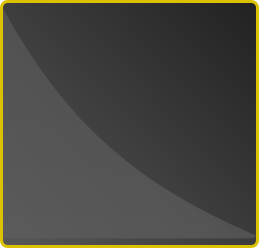
1891 Kennard board
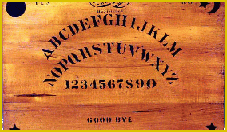
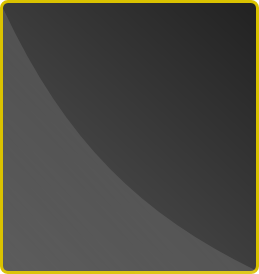
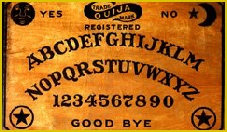
Fuld 1917 Ouija Board

Parker Brothers 1967 Ouija
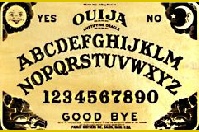
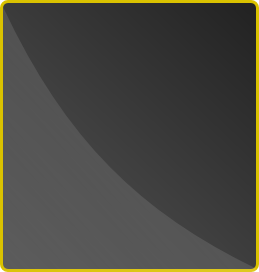
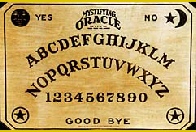
1920 Fuld Mystic Oracle board

Fuld 1915 Oracle board
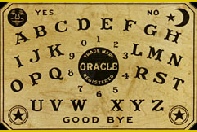
|
Le prieur des capucins lui fit des demandes en latin auxquelles elle répondit fort mal; et enfin on trouva, dans certains papiers, qu'elle avait été déjà, quelques années précédemment, fouettée en place publique pour avoir voulu se faire passer pour démoniaque; on la condamna à une réclusion perpétuelle. |
Previously, the Capuchin (Franciscan Order of Friars Minor Capuchin) asked questions in Latin and the girl responded incorrectly; and finally it was found in some papers that a few years earlier, she was already whipped in the public square for trying to impersonate a demon and was condemned to perpetual imprisonment. |
|
Le VENT DU SUD-EST. Celle statuette de bronze, qui est au musée du Louvre, montra comment les Assyriens figuraient les démons et comment leurs ouvriers savaient travailler le bronze. Sin, le dieu lune, le premier des dieux. Chamach, le dieu soleil, dieu de la lumiére. Nergal, dieu de la planéte Mars, le dieu lion. Nebo, dieu de la planéte Mercure, le dieu des sciences. Mardouk, dieu de la planéte Jupiter, dieu de Babylone. Ninip, dieu de la planéte Saturne, le dieu de la force, qui étouffe les lions dans ses bras. |
The WIND of the SOUTHEAST. This bronze statuette, which is in the Louvre, showed how the Assyrians [perceived] the demons and that their workers knew how to work the bronze. Sin, the moon god, the first of the gods. Shamash, the sun god, the god of light. Nergal, god of the planet Mars, the lion god. Nebo, god of the planet Mercury, the god of science. Marduk, god of the planet Jupiter, the god of Babylon. Ninip, god of the planet Saturn, the god of force, smothers lions in his arms. |
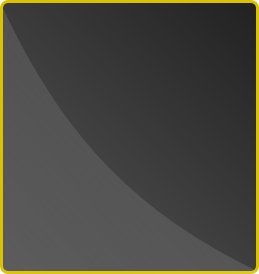
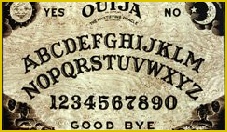
Fuld 1940 Ouija Board

Harry Houdini
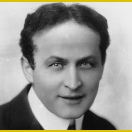

Pazuzu

Zozo the magic queen poster

Pazuzu page from 1916 Malet book


| Paranormal Books |
| Apparitions |
| Cryptids |
| Demons |
| Orbs |
| Poltergiest |
| Residual Hauntings |
| Shadow People |
| West Demons |
| Ouija and Zozo |
| Exorcisms |
| Anneliese Michel |
| Ronald Hunkeler |
| Anna Ecklund |
| LaToya Ammons |
| George Lukins |
| Christian Demon texts |
| Roman Rite 1614 |
| Roman Rite 1998 |
| Eastern Demons |
| FAQ |